Ladybugs begin their lives as eggs before turning into larvae to then finally become adults.
These eggs are of strategic importance and are always laid in a safe place but always close to a food source for emerging larvae.
There are various shapes and colors these eggs come with, depending on individual ladybug species. Here’s how to identify them.
Table of Contents
What are ladybug eggs?
Ladybug eggs are incipient life stages of Coccinellidae beetles. These beetles are identified by their dome-shaped appearance with black and red colors, albeit they come in plenty of other colors.
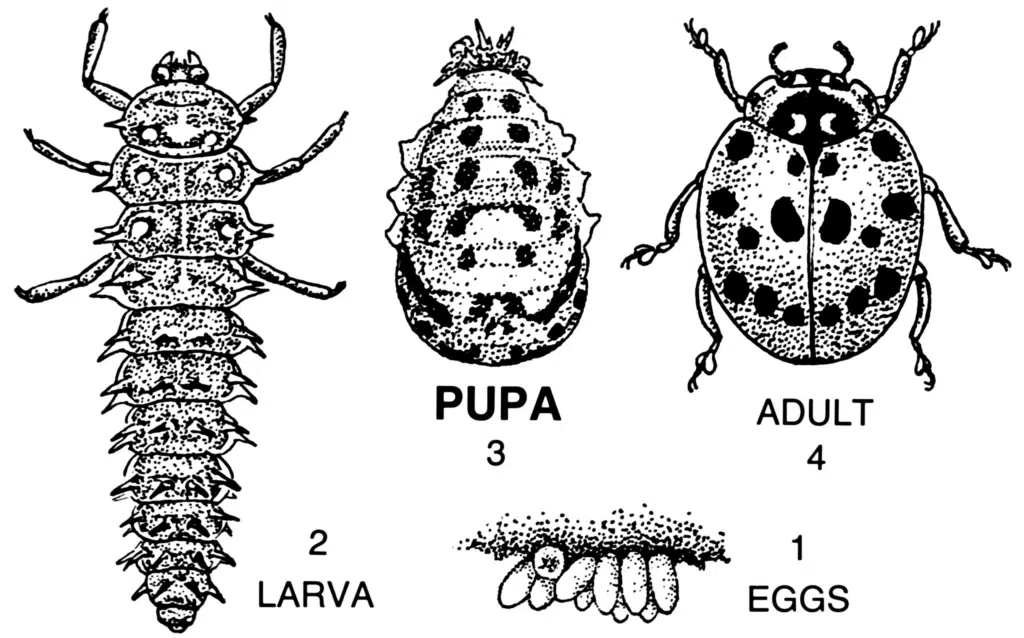
Ladybug egg facts
- Ladybugs lay clusters of eggs next to a food source such as a bug infestation
- Colorful, round, or elongated, ladybug eggs can be yellow, orange, gray, or green
- Most eggs are laid in clumps on the underside of leaves
- Ladybug eggs are shiny
- Preferred laying locations include a place with abundant food sources for emerging larvae
- A female ladybug lays up to 1,000 eggs within a season
Ladybug eggs identification
The way the eggs look and their location helps correctly identify ladybug eggs. These eggs are found in some of the weirdest places for humans, but there’s a strategy behind their location.
Number of eggs
Ladybugs lay eggs in small clusters. 8 to 30 eggs are typical per cluster.
The number of laid eggs in a cluster is highly variable, on the other hand. Some species can lay even more eggs, especially in areas with abundant food.
A female ladybug, responsible for laying the eggs, typically spreads out these clusters over a few months.
The total number of laid ladybug eggs within a season varies from a few hundred to more than 1.000.
Since a female ladybug lives up to 1 year, this number can also equate to the number of eggs a female ladybug lays per life cycle.
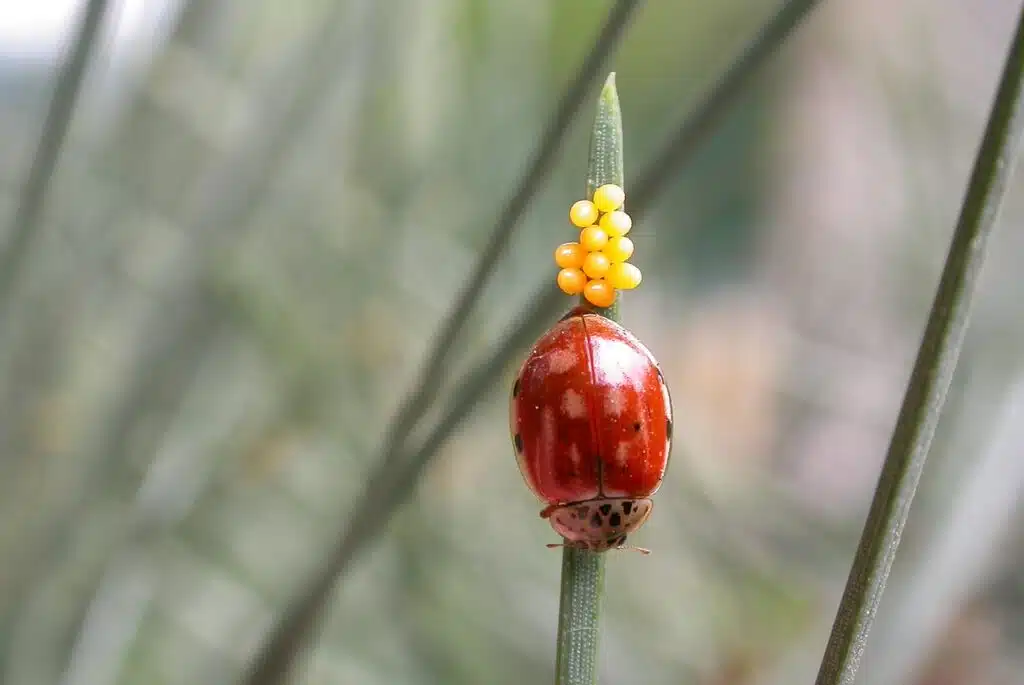
Shape
Perfectly round eggs are a rare sight for ladybugs. These eggs are mostly oval, with pointy tips. Spindle-shaped ladybird eggs are also highly common.
There’s a pointy nature to these eggs but they do have a sticky substance that allows them to be attached to a leaf vertically.
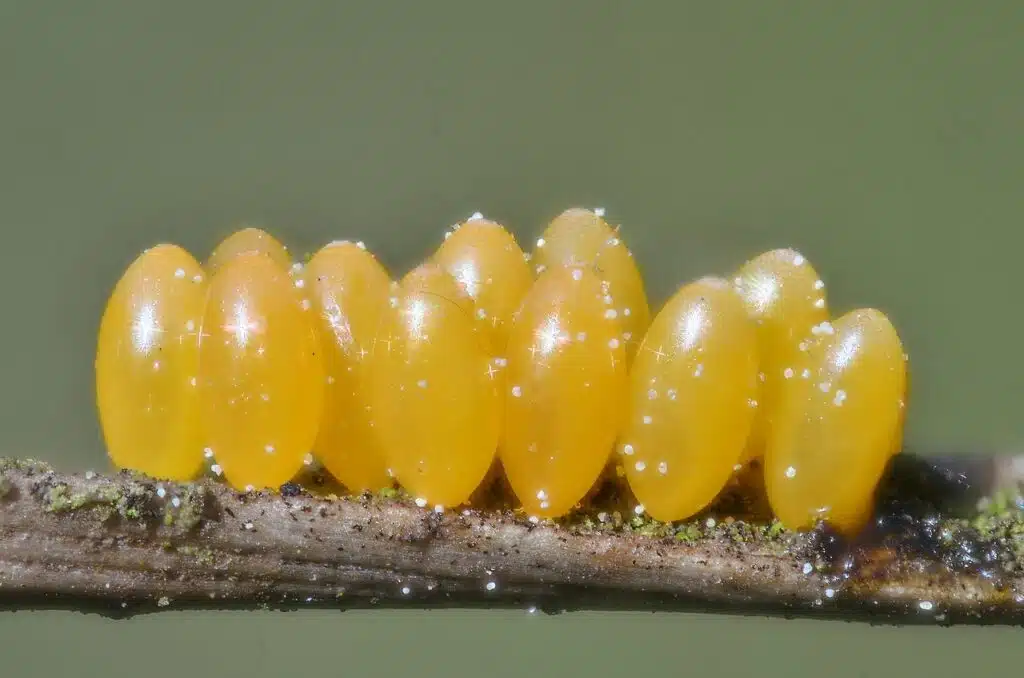
Size
Ladybug eggs are some of the smallest eggs of a predator bug. Some are not visible on their own, but rather in clusters.
These eggs vary in size from <1mm to 2.55mm. This equals the length of the oval eggs.
Often food to other species due to their size, ladybug eggs can also be part of cannibalistic eating habits as ladybugs themselves might eat these small eggs when other food sources are scarce.
Color
Pale yellow, yellow, and pale orange ladybug egg colors are the most common. These colors are seen across multiple species.
Green and gray are some of the rarest types of ladybug egg colors.
These eggs rarely change color at this life stage. Most hatch within 10 days and their color remains constant in this timeframe.
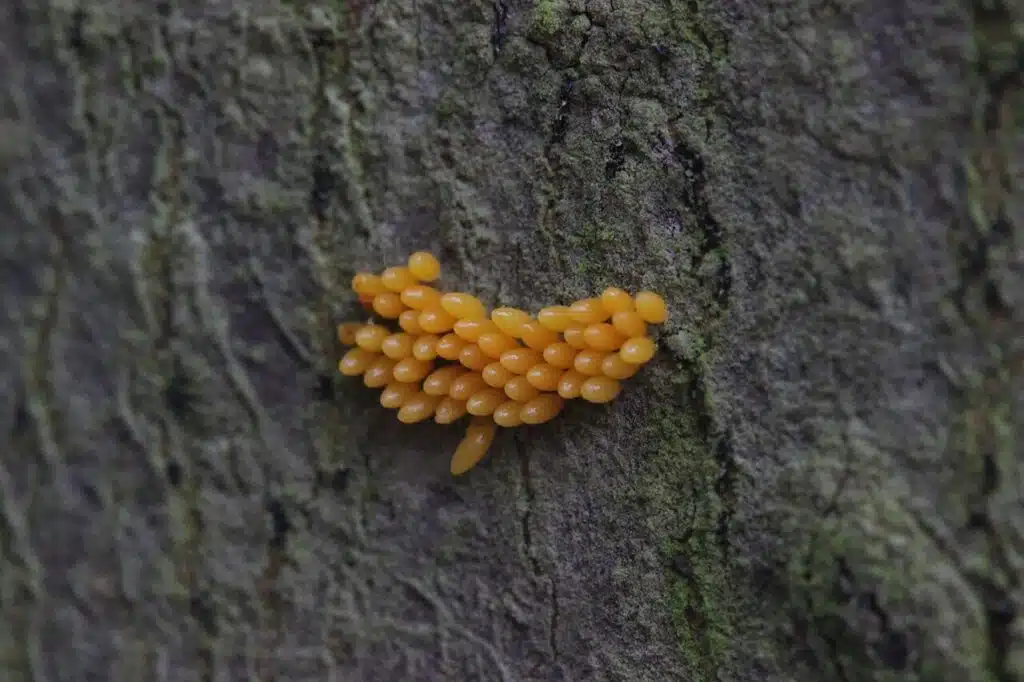
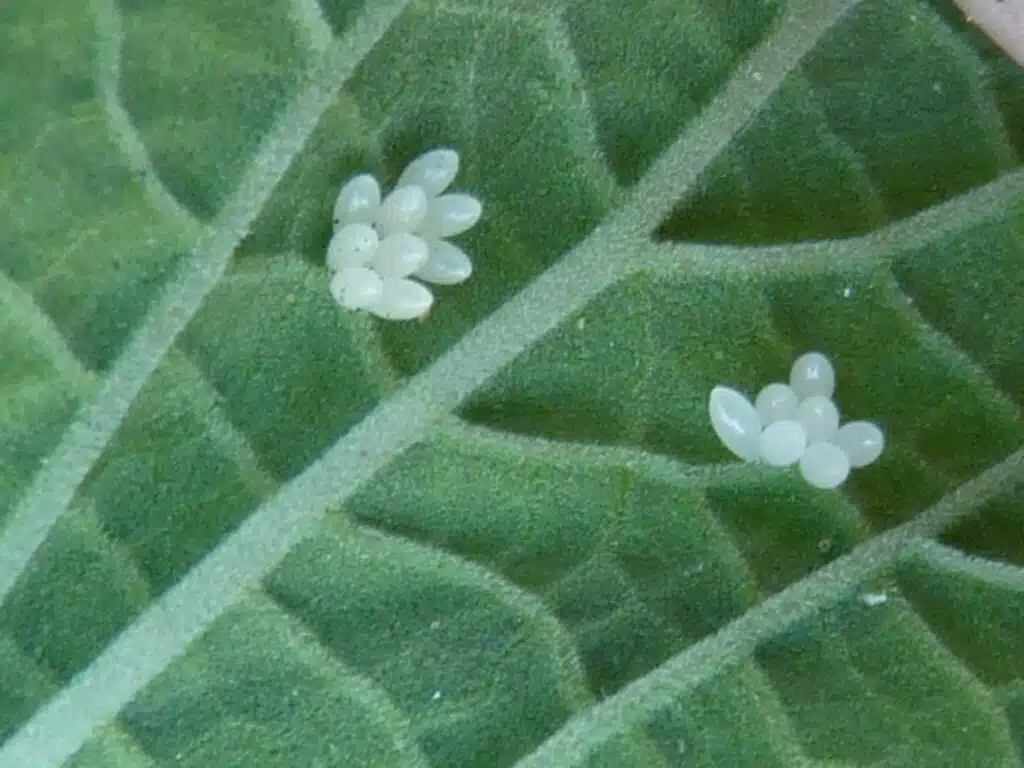
Location
Female ladybugs always scout for an ideal location for the eggs. An ideal location meets criteria such as perceived safety from predators as well as the best food sources for the emerging larvae.
Here’s why the location of the eggs is important.
The underside of leaves – this is an out-of-sight area for the eggs to be laid on. Female ladybugs look for these locations as the eggs are eaten by other species when laid in full sight.

Close to food such as aphids – ladybugs are predatory and even their larvae start to consume small bugs and their eggs. Around 200-300 bugs are eaten by a ladybug within a year, starting with the larval stage.

Hatching time
Eggs hatch in 7-10 days, on average. Variables such as temperature can influence the number of these days considerably. Cooler days may lead to a 20-day hatching time.

Fertile vs. infertile eggs
Research into lady beetle eggs is just incipient. Some species are more researched than others but the role of their eggs is just beginning to be understood.
It’s not clear if most ladybug species lay both fertile and infertile eggs, but there are beetles of this type that lay both types of eggs.
Cardinal Ladybugs (Novius cardinalis) are among the species that lay both types of eggs.
- Fertile eggs
Fertile eggs are those eggs that eventually become ladybug larvae. By the looks of it, the number of these eggs can be equal or small to the number of infertile eggs in studied ladybug species.
- Infertile eggs
Infertile eggs are the most numerous across studied species such as Cardinal Ladybugs. The role of these eggs is to serve as food.
Both emerged larvae and adult beetles feed on these types of infertile eggs when other food sources are scarce.
Females can also lay a larger number of infertile eggs to ensure the emerged larvae don’t starve in periods of low food availability.
What kills lady Beetle eggs
Not all lady beetle eggs get to hatch after 10 days. Some end up being eaten while others die from other causes as follows.
- Other ladybugs
Infertile ladybug eggs are the most likely to be eaten by ladybugs in periods of food scarcity. Even fertile eggs may sometimes end up being eaten when adults or larvae go hungry.
- Bacteria
Various species of bacteria impact lady beetle eggs. Wolbachia, a type of parasitic microbe kills ladybug eggs. Once infected the egg dies within a few days.
- Lace bugs
Making their way around leaves and grasses, Lace bugs are some of the most common ladybug egg enemies. They feed both on the fertile and infertile eggs.
- Assassin bugs
As Lace bugs, Assassin bugs can also eat lady beetle eggs. They may feed opportunistically and even eat multiple eggs in one feeding session.
Where to find lady Beetle eggs
The underside of flowers, legumes, and other plants in the garden are common places to look for lady beetle eggs.
Ares with invasive species such as aphids are also likely to have lady beetle eggs hatching on the underside of leaves as these are food for the nymphs and adult lady beetles.
Farms, fields, parks, and gardens are all likely to be good places for ladybugs to lay their eggs.